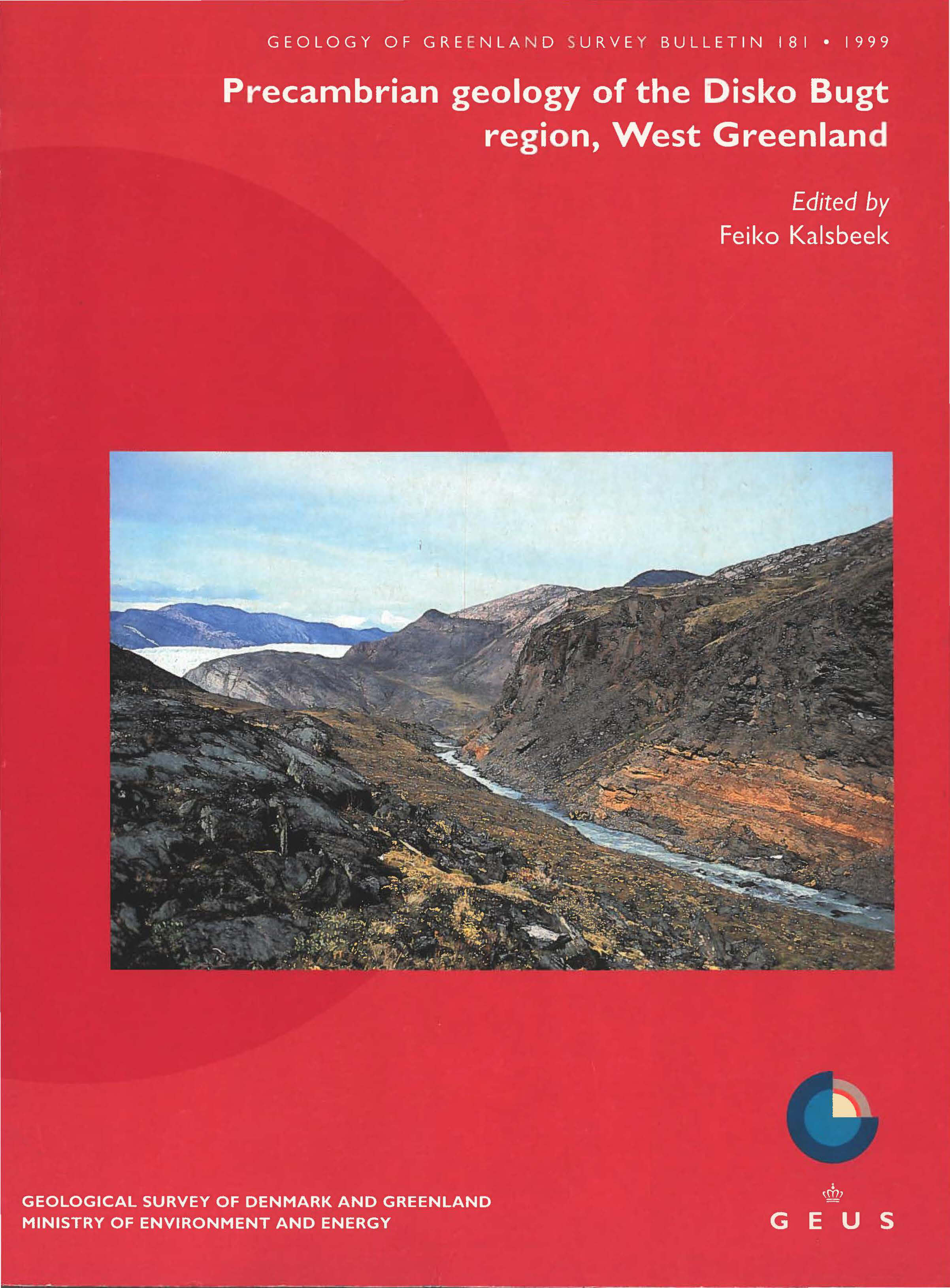Proterozoic thermal activity in the Archaean basement of the Disko Bugt region and eastern Nuussuaq, West Greenland: evidence from K-Ar and 40Ar-39Ar mineral age investigations
DOI:
https://doi.org/10.34194/ggub.v181.5113Keywords:
40Ar-39Ar ages, Archaean rocks, Disko Bugt, K-Ar ages, lamproite, Proterozoic metamorphism, West GreenlandAbstract
K-Ar and 40Ar-39Ar analyses of amphiboles from Archaean amphibolites and gneisses show that Proterozoic tectono-thermal activity has played an important role in the metamorphic and structural development of the Precambrian rocks around north-eastern Disko Bugt and in eastern Nuussuaq. Proterozoic thermal activity lead to resetting of the K-Ar ages of amphiboles in eastern Nuussuaq, resulting in ages of c. 1750 to 1925 Ma; in the Disko Bugt area the effects are seen in total or partial resetting with K-Ar ages scattering mostly between 2750 and 1870 Ma. Resetting is caused either by total diffusion of earlier accumulated radiogenic argon or by complete recrystallisation of the amphiboles. Archaean 40Ar-39Ar ages obtained from mafic xenoliths within the Atâ tonalite show that not all parts of the area suffered argon loss during Proterozoic reheating. Incorporation of significant proportions of excess argon in some amphiboles is seen from 40Ar-39Ar mineral age spectra obtained for samples from supracrustal rocks and from mafic xenoliths in the Atâ tonalite. Phlogopite phenocrysts from a lamproite stock yielded a K-Ar age of 1764 ± 24 Ma, identical to a previously determined K-Ar age of the matrix phlogopite. These ages probably date the emplacement of the lamproite, and mark the time after which no tectono-thermal events affected the area.
Downloads
Published
Issue
Section
License
This article is distributed under a CC-BY 4.0 licence, permitting free redistribution and reproduction for any purpose, even commercial, provided proper citation of the original work. Author(s) retain copyright over the article contents.


